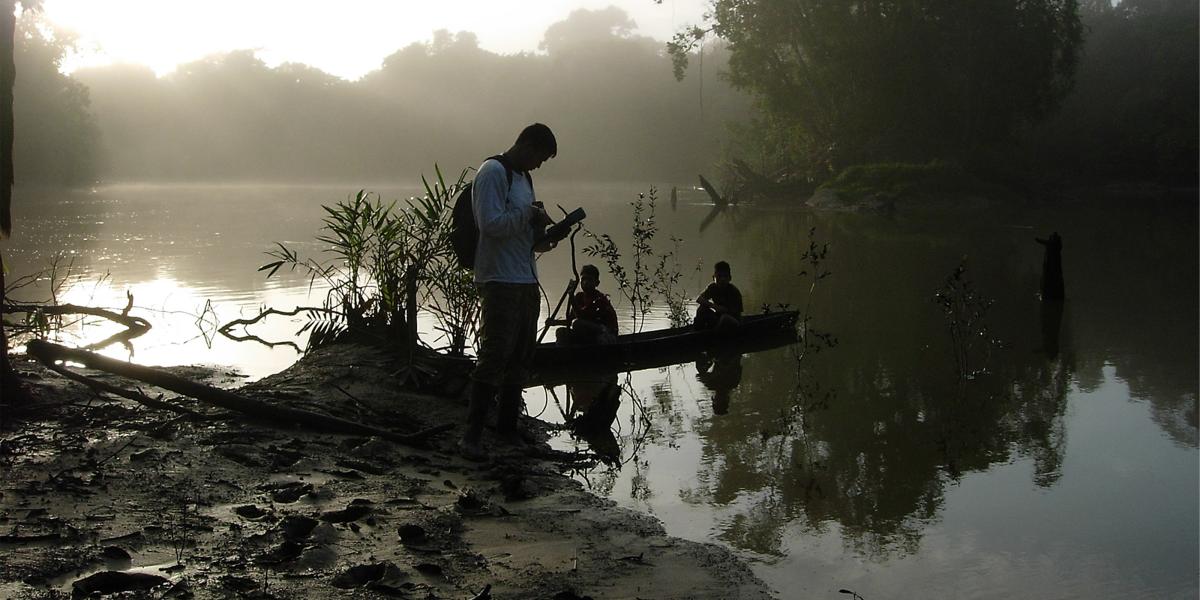From Development to Disease
For decades, environmental health scientists have charted correlations between development and disease. Now new tools, such as remote sensing, geographic information systems (GIS) and spatial analysis, are paving the way for fine-grained analysis that is turning up startling results.
Environmental scientist John Groopman, who has worked in the field for decades, says this sophisticated analysis is critical to understanding the rapid changes occurring worldwide. “We are in the stage, as a planet, where we have very different and unequal uses of energy and natural resources,” he says. Groopman’s concern for the next decade is about use of the world’s natural resources: energy (oil, coal, natural gas), water and land. “These patterns of use will have a huge impact on human health,” he says.
Much of today’s innovative work is being done in close collaboration with environmental biostatisticians. Decades ago, public health experts placed clear transparencies atop each other to “see” how development, such as urbanization, impacted disease patterns. Today, with sophisticated imaging technology, biostatisticians analyze many layers of data simultaneously.
William Kuang-Yao Pan, for instance, is evaluating the impact of rapid land development on the health of people in the Amazon River basin. Nearly one-fifth of the Amazon rainforest has disappeared since the 1970s. As one of the world’s most rapidly changing ecosystems, the Amazon is a perfect laboratory for understanding how land-use change impacts human health, Pan says.
In a series of studies, Pan and his team are examining how road construction through pristine jungle can open areas up to increased disease risk. In a 2009 study, published in The American Journal of Tropical Medicine and Hygiene, for example, Pan and his team found that deforestation and land alteration were conducive to certain mosquitoes—the Anopheles darlingi, the most important vector of malaria in the Amazon. A. darlingi, one of hundreds of mosquito species in the Amazon (15 percent to 30 percent are capable of transmitting malaria), tends to prefer less forested ground cover, Pan says. Sites with darlingi larvae had an average of 24.1 percent forest cover, compared with 41 percent for areas without the more dangerous mosquitoes, the study found.
Pan’s team now is analyzing data from another study that looks at the development of a new government-sponsored highway to the village of Mazan, through the Amazon, from the city of Iquitos, the largest city in the Peruvian Amazon. The team is collecting data about household and community demographics (population size, fertility, migration, labor and food consumption); environmental sampling (water quality, daily climate, anopheline biting rates and land cover); regional infrastructure (measures of access and means of transport to markets and other locations); and disease burden (strategic surveillance of malaria and nutritional indices in children).
“Road construction rapidly accelerates the conversion from forest to agricultural land,” Pan says. “It alters the local ecology, biodiversity and conditions in which people live. There is the potential for widespread implications for human health.”
But, Pan adds, the work is complicated and requires sophisticated tools and broad-based teams of experts. “These are tough problems because everything is linked,” he says. “We need scientists who can work across disciplines—from laboratory and medical experts to Earth scientists.”
Biostatistician Frank Curriero agrees: “This whole field is exploding. We are now developing inferential methods that allow us to link environmental change, in both space and time, to human health outcomes.”
Curriero has used spatial statistics and GIS to look at the health impacts of many types of environmental change, including increased rainfall and its link to disease, as well as how episodes of extreme temperature associate with increased mortality.
In a 2001 study, published in the American Journal of Public Health, for example, Curriero and his team found that more than half the waterborne disease outbreaks in the U.S. between 1949 and 1999 were preceded by heavy rainfall. A 2002 study, published in the American Journal of Epidemiology, found that episodes of extremely hot or cold temperature are associated with increased mortality—with a greater effect of colder temperatures on mortality risk in Southern cities, and of warmer temperatures in Northern cities.
Both studies, says Curriero, used analysis that is potentially useful for projecting the consequences of climate-change scenarios on human health.
